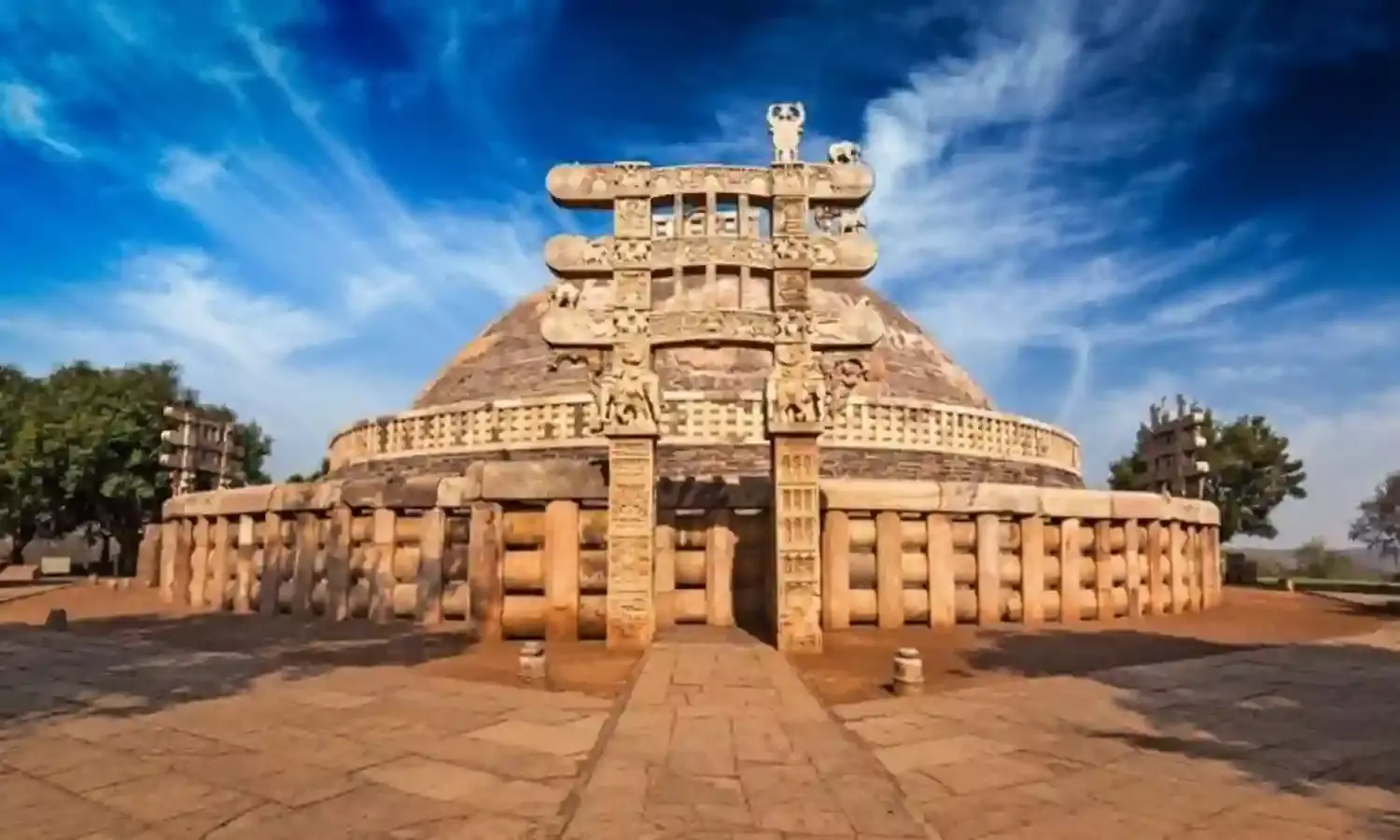The Sanchi Stupa Will Blow Your Mind
We must treasure the remnants of our collective past

A day out in Sanchi recently took me back in time. I remembered with sheer nostalgia my childhood sojourns to such legendary places with my parents – road trips laced with historical descriptions of their grandeur, beauty and magnificence through my father. Driving through India is nothing short of an adventure. There is so much to soak in and imbibe.
However, as we drove through rather dilapidated stretches of the highway from Bhopal, about 50 kms away, and reached Sanchi without much fanfare, hoardings or even a board showing the turn and path to the Stupa… the aura of the splendour associated with these monuments, as fixated in my mind since childhood, crumbled. We really need to support preservation through advocacy and action.
The state of utter dilapidation and disrepair needs to be seen to be believed. Everywhere the rampant apathy of those concerned with the maintenance and upkeep of the premises is writ large. The broken cobbled paths, the garbage strewn on either side of the route leading to the Stupa leave you ashamed as you see a multitude of local and foreign visitors making their way through.
On entering, the dome of the Sanchi Stupa looks perfectly intact and blows your mind away by its sheer beauty. There is a sense of peace and solitude as you walk around the site. Luckily the sun wasn’t harsh and the cloudy skies kept us cool as we traversed the length and breadth of the grounds. This UNESCO World Heritage Site still surprises me in many ways.
A visit to Sanchi brings alive the awe you felt as a child as you opened your history books and read tales of Emperor Ashoka. He built this great stupa and made the town of Sanchi sacred as well as popular in the third century BCE.
Later, a British cavalry officer rediscovered and revived the inviolability of the town in 1818.
Buddhist influence over the central Indian landscape had declined by the 12th century and the stupas and other monuments slipped into obscurity. As Buddhism receded, often under attack from Shaiv or Vaishnav kings, these architectural marvels were no more considered useful, and eventually, were completely forgotten.
It was in the year 1818 that a British officer, Taylor, discovered the site of Sanchi. He set about restoring its glory. Between 1912 and 1919 these beautiful ancient structures were restored to their present condition under the supervision of John Marshall, director-general of the Archaeological Survey of India.
Today around 50 monuments remain on the hill of Sanchi, narrating the rise and fall of Buddhist art and architecture.
The Sanchi Stupa is more than a reliquary preserving the remains of Buddhist teachers and Buddhism. It shows the journey to enlightenment. Traditionally, stupas do hold relics of Buddha or of influential Buddhist monks. But at the same time these structures also explain how Buddha achieved enlightenment, freeing himself from the cycle of life and death.
The Stupa consists of a base bearing a hemispherical dome (anda), symbolizing the dome of heaven enclosing the earth. It is surmounted by a squared rail unit (harmika) representing the world mountain, from which rises a mast (yashti), symbolizing the cosmic axis. The mast bears umbrellas (chatras) that represent the various heavens (devaloka). The Toranas present at the Stupa indicate trust, peace and courage.
The most interesting feature of the Sanchi Stupa is that Buddha has been symbolically represented by footprints, wheels, thrones etc. rather than direct depictions of his body.
As per the legend, the name Sanchi originated from the word sanch, which means 'to measure'. It is believed that originally the Stupa was made of brick. And in a later period, the current stone stupa was built on top of the brick one. The brick one is said to be only half in size of the new one.
One needs to be thankful for the stone construction as it has weathered many a storm. There are multiple stupas within the complex as well as around Sanchi that are made of brick but have not withstood time.
History says that the outer stone wall was constructed during the Shunga period, in the second century BCE.
The town of Sanchi is naturally synonymous with Buddhist philosophy. Sanchi has been protecting these beautiful and sacred architectural wonders, just as these wonders have been safeguarding ancient history and the art of the Mauryan period. Located in the Raisen district of Madhya Pradesh, Sanchi needs more visibility and infrastructure to handle the endless stream of visitors, most of whom are foreigners. The town has barely a handful of below average lodges and eating joints, and most visitors end up staying in Bhopal and driving down for the day because of this.
The state of Madhya Pradesh is a perfect confluence of different kinds of heritage: natural, cultural and aesthetic. What is truly epic about its cultural repository are some of the geographical aspects emanating from its history, and well, geology. Take for instance, the Tropic of Cancer line that passes through Vidisha district, another common stopover for enthusiasts enroute to the glorious Sanchi Stupas.
As I stood at the entrance of the Stupa, and soaked in the figurines and stories etched on these gateways, it made me realise that preserving history is important because it connects us to specific times, places and events that were significant milestones in our collective past.



